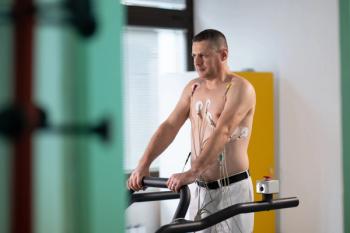
The Global Economics of New HCV Treatments
Medicare costs, Department of Veterans Affairs budgetary costs, and the economic impact on the developing world-these were some of the topics discussed at the evening session, Health Economics and Cost-Effectiveness, on the third day at The Liver Meeting 2014, held in Boston, Massachusetts, November 7 to 11, 2014.
Department of Veterans Affairs
Medicare costs, budgetary costs, and the economic impact on the developing world—these were some of the topics discussed at the evening session, Health Economics and Cost-Effectiveness, on the third day at The Liver Meeting 2014, held in Boston, Massachusetts, November 7 to 11, 2014.
The session was kicked-off by David Rein, PhD, principal research scientist with the Public Health Research Division, National Opinion Research Center, the University of Chicago. As he began his talk, “Projected Health and Economic Impact of Hepatitis C on the United States Medicare System From 2010 to 2024,” Dr Rein presented statistics showing that while over a million Americans with hepatitis C virus (HCV) will age into Medicare by 2024, information on the clinical and economic burden of HCV in Medicare is limited. “The objective of our study was to identify the Medicare HCV patient population in 2009, understand what happened to that population over the last decade, and predict their cost-burden over the next decade,” he explained.
The researchers used primary data to estimate the clinical burden of HCV in Medicare in 2009 and forecast this burden until 2024, assuming 3 treatment strategies: no treatment; treatment with pegylated interferon, ribavirin, and a protease inhibitor (PI); and an all-oral high efficacy regimen (AO). The Medicare administrative claims data that they evaluated included 122,417 patient years of diagnosed HCV across the years 2002-2009. Using International Classificiation of Diseases, Ninth Revision, Clinical Modification codes, they divided the patients into 6 stages: chronic HCV, cirrhosis, decompensated cirrhosis (DCC), hepatocellular carcinoma, transplant/post-transplant, and death within a year of HCV diagnosis. They estimated incremental annual costs of each stage using a 2-part health expenditure, and weighted the data to estimate the Medicare population in each HCV stage as of 2009 and estimated new cases of HCV entering Medicare from 2010-2024.
The authors estimated nearly 800,000 patients with HCV in Medicare in 2009—63.1% with chronic infection only, 9.9% with cirrhosis, 14.7% with DCC, 2.5% with HCC, 2.6% transplant or post-transplant maintenance, and 7.2% died during 2009. These patients, said Dr Rein, would be a cost-burden of $2.7 billion. Further, using their simulation model, they predicted that more than a million new individuals with chronic HCV would enter the Medicare system between 2010 and 2024. Simplified scenarios were used for the analysis, said Dr Rein: treatment or no treatment. The authors predict that of these nearly 1.8 million individuals, lack of treatment would result in the death of nearly 661,060 (36.2%) from HCV or other causes while in a diagnosed state of DCC, HCC, or transplant/post-transplant. They observed that treatment predicted a substantial increase in the number of patients with a sustained virological response, which then reduced due to natural death: a result of the aging population. Treatment with PI reduced deaths by 29,720, and increased undiscounted quality-adjusted life years (QALYs) by 1,562,119. Treatment with AO reduced deaths by 126,163 and increased undiscounted QALYs by 7,692,906.
Dr Rein concluded that treatment, especially treatment with interferon free, all-oral regimens could substantially reduce morbidity and mortality from HCV within Medicare. “A major limitation of our study that needs to be acknowledged is that Medicare data are from 2003-2009, an era prior to the modern therapies. Also, we used diagnosis codes instead of actual laboratory data, which could be another limitation of our study,” concluded Dr Rein.
Sharing his work on “Minimum costs to produce Direct Acting Antivirals and associated diagnostics for developing countries,” Andrew Hill, PhD, Molecular and Clinical Pharmacology, University of Liverpool, Liverpool, United Kingdom, took to the podium next. Using the paradigm of mass-produced HIV/AIDS drugs for treating patients in low and middle-income countries (LMICs), he said that the cost of treating HIV in developing countries has fallen from over $10,000 per person per year (PPPY) in 2000, to under $100 PPPY in 2014. “For the widespread treatment of HCV in developing countries to be feasible, we need short courses of antiviral treatment available at very low cost,” said Dr Hill.
The aim of their study was to estimate the minimum costs of direct acting antiviral (DAA) treatment and associated diagnostic monitoring. He said that their study had 4 basic assumptions:
- The generic manufacturing methods are the same as those used to supply antiretrovirals to people with HIV/AIDS in developing countries.
- There would be no patent restrictions on mass drug production.
- Procurement of large orders for drug manufacturer by generic companies (1 to 5 million people treated per year) in a competitive price market.
- Use of minimal diagnostics to confirm HCV infection and then cure after treatment, plus safety monitoring.
The authors reviewed clinical trials of HCV DAAs to identify combinations with consistently high rates of SVR in different genotypes. The combinations chosen had phase 2 or 3 trial results available as well as safety data. Additionally, future clinical trials in different genotypes had been planned for these molecules, and patent expiry dates were known. Dr Hill presented data on daclatasvir (BMS, patent expiry 2027), sofosbuvir (Gilead, 2029), ledipasvir (Gilead, 2030), MK-5172 (Merck, 2029), MK-8742 (Merck, 2028). For each of these DAAs, the cost for mass production was estimated by considering the molecular structure, daily dose, treatment duration, compounds of retro-synthesis, and 40% margin for formulation (including the profit margin for generic suppliers). Further, the manufacturing costs per gram of DAA were projected as formulated product cost, based on treating 5 million patients/year.
“We went to generic manufacturers in India, shared the molecular structures of these DAAs and got their input on the feasibility and cost of manufacturing these drugs,” said Dr Hill.
The following table provides the estimated minimum costs per person for a 12 week course of HCV DAAs:
Agent
Daily Dose
(mg)
Overall Dose for 12 weeks (g)
Production cost estimate ($/g)
Predicted cost
($)
Daclatasvir
60
5
4
20
Sofosbuvir
400
34
3
101
MK-8742
50
4
11
44
MK-5172
100
8
8.9
74
Ledipasvir
90
8
11.6
93
Dr Hill emphasized that these estimates are inclusive of the profit margins for formulation.
He went on to discuss the need for simplified diagnostic testing for the virus—simple, low-cost methods—ideally antigen testing, he said. “Diagnostics and monitoring could be limited to 2 HCV antigen tests to confirm chronic infection prior to treatment, and then clearance after treatment. Additionally, there could be 2 complete blood counts and clinical chemistry tests. Genotyping by PCR could be done only if absolutely necessary,” said Dr Hill. Per these requirements, Dr Hill and his research team estimated that the costs of treatment and diagnosis to cure HCV-infected patients for the various combinations would range from $174 to $354, minus the genotyping (which ranged from $264 to $444).
While predicting that other novel drugs will also be evaluated in a similar manner, Dr Hill concluded, “This low-cost treatment package could make universal access to HCV treatment in lower resource settings a realistic goal. However, we need new funding for HCV treatment to be established at either the national or the international level, to allow large drug orders to be made, and these economies of scale to be achieved.”
Newsletter
Stay ahead of policy, cost, and value—subscribe to AJMC for expert insights at the intersection of clinical care and health economics.













































